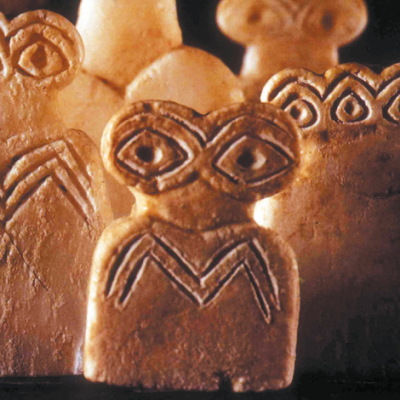Looting in time of war has been illegal internationally since the 1907 Hague Convention but continued to occur throughout the 20th century. Public awareness of resultant claims to works of art, however, is typically limited to Nazi confiscations. In fact, the breadth of historic claims extends geographically and chronologically far beyond that, but other instances are little discussed and their impact on public and private art collections has not been resolved.
Germany has developed a justifiable reputation for mismanagement of cultural property within its borders. Nazi-era restitution claims, and the backlash against the stringent restrictions on the export of cultural assets proposed by the government this summer, are widely known. But other claims resulting from government intervention between the Second World War and today are less widely reported, despite posing a similar risk to the art market.
Take the successors of the Nazis in the German Democratic Republic. In 1973, in an attempt to solve its mounting debt problems, the state reportedly created a task force of ‘art investigators’ within the Stasi to source cultural assets which were then sold to Western buyers. In the subsequent two decades, it is believed about 200 collectors were falsely accused of being dealers and of evading taxes, forcing them to surrender their cultural assets to the authorities. Few have received compensation, fewer still have managed to trace and recover artworks that were sold abroad.
Germany, however, is not alone in struggling to resolve such issues. As the Red Army marched towards Berlin in the last days of the Second World War, specially appointed teams appropriated cultural assets ranging from Impressionist masterpieces to Trojan gold treasures as compensation for damages caused in Soviet territory by the Nazis. According to German authorities, Russia still holds over a million of these artworks in state museums, having declared itself their rightful owner in 1996. Others, seized by high-ranking Soviet officials for their personal gain, are certainly hanging in private collections.
Historic claims have arisen from civil unrest further afield. Throughout the 1960s, Cuba’s new government seized cultural assets left behind by collectors fleeing the revolution. Many works were placed in national museums: the former home of the exiled Gómez-Mena family and its contents now make up the Museo de Artes Decorativas de la Habana. Others were smuggled abroad and sold at auction to profit the state. Unlike the Nazi government, the Cuban Communist government is currently recognised as official; therefore its confiscations are viewed within the framework of national sovereignty. Should any doubt be cast on the legitimacy of those actions, Cuban exiles will be able to pursue restitution efforts in Cuban courts.
But 20th-century plunder has not been motivated solely by financial gain. The Empire of Japan in the first half of the century and Iraq in its last decade plundered Southeast Asia and Kuwait respectively for imperialist motivations, dispersing collections from occupied territories into private collections across the world. Almost 500 artefacts are still missing from Kuwait’s National Museum alone.
Even as you read this, the terrorist group Daesh (or the self-styled Islamic State) is plundering museums, private homes, religious institutions and archaeological sites in Iraq and Syria to destroy or sell cultural assets. Similarly, Cambodia’s civil war of the 1970s saw paramilitary groups looting archaeological sites to sell sculptures for profit. Some artefacts were purchased by illustrious institutions including the Metropolitan Museum of Art in New York, and others have turned up at Christie’s and Sotheby’s (both the Met and the auction houses have subsequently returned Cambodian statuary to the country). However, many have ended up in private collections.
These are the historic claims of tomorrow. In each case discussed, there has been insufficient commitment to returning to their rightful owners – be they private collectors or public institutions – cultural assets that were seized en masse. The legislation concerning cultural assets and the awareness of legitimate ownership claims needs to be improved worldwide, to protect both victims of past crime and current buyers of art.


